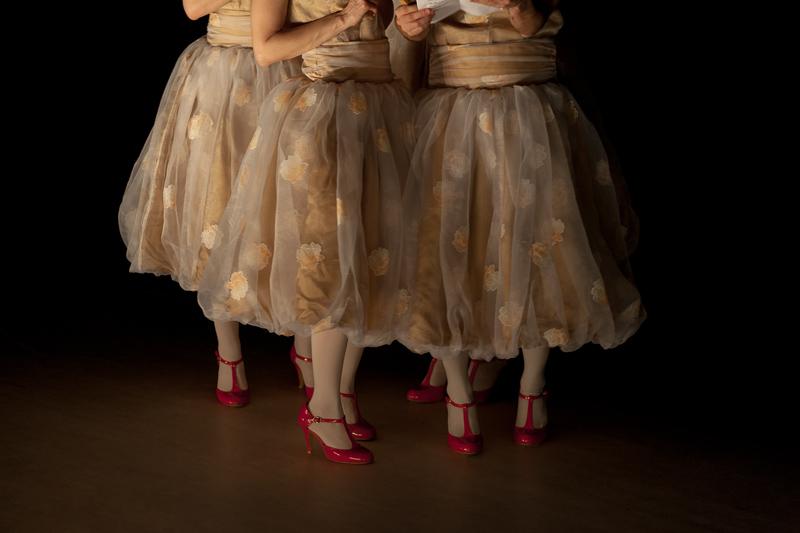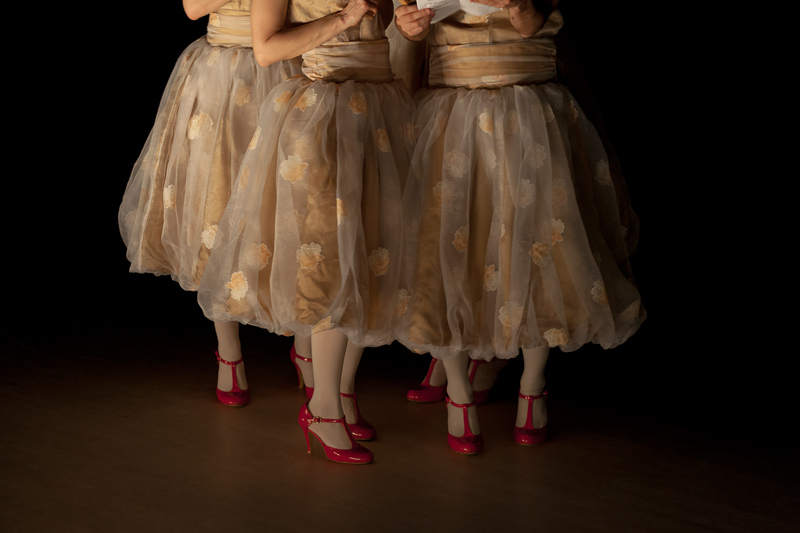
WILDE
The so-called repertory theatre is based on principles of repetition and difference: the same play is appropriated by different companies, or different directors, time after time, for decades or centuries (1). One attempts the balance between the ritualistic restoration of its quality (repetition itself) and the purest revelation of its dramaturgical essence. Between the so-called timelessness and the new. etween tradition and mannerism, or iconoclasm. Between canons and the attempt to reflect, on them, an idiosyncratic stance. Between the history of the successive versions of the play and the aim of those that try and challenge that history, or subscribe them. Dialectics.
Wilde is the result of collaboration between the theatre company mala voadora and dancer and choreographer Miguel Pereira, from O Rumo do Fumo. It is based on Lady Windermere’s Fan: A Play about a Good Woman, by Oscar Wilde (2), and, specifically, the audio recording of its radiophonic version produced by BBC Radio 7. The show is an appropriation of that recording of a past performance, which is itself an appropriation of a play from its past. It is a historicist show, or an archivist one. And its not.
(1) Lady Windermere’s Fan, A Play About a Good Woman, by Oscar Wilde, premiered on February 22, 1882, at the St. James Theatre in London. In 1883, the play was published in its original English language. In 1916 and 1925 adaptations for the cinema were made, respectively, by Fred Paul and Ernst Lubitsch. In 1949, Otto Preminger directed a new film, simply tittled The Fan. In 1944 the play was first staged in Portugal, at Teatro Nacional Dona Maria II, by the Amélia Rey Colaço and Robles Monteiro company. It was translated by Dr. Júlio Dantas and given the title O Leque de Lady Windermere. In 1993, with the same title but with a new translation by Maria João da Rocha Afonso, it was staged again at the Teatro National. It was directed by Carlos Avillez and choreographed by Luís Moreira. It was also transformed into a musical, filmed for television and interpreted in radiophonic versions.
(2) Lady Windermere’s Fan is a critique of the conventions of Victorian society. It satirizes the moralism of “reputations” and the reduction of “virtue” to a matter of appearance. In contrast with the dramatic model in which the joyful and virtuous conclusion results from the “restoration of truth” by the hero, Wilde constructs a plot in which the characters’’ happiness is guaranteed by the slick construction of a lie by a woman of doubtful character.
Direction
Jorge Andrade and Miguel Pereira from Lady Windermere's Fan, by Oscar Wilde (radio broadcasting produced by BBC Radio 7)
With
Carla Bolito, Joana Bárcia, Jorge Andrade, Miguel Pereira, Nuno Lucas, Tiago Barbosa, Valentina Parlato
Set Design
José Capela
Costumes
José Capela, with seamstress Eduarda Carepa
Light Design
Daniel Worm d’Assumpção with assistance from Ricardo Campos
Sound Design
Jari Marjamäki
Chorus
Rui Lima and Sérgio Martins
Scene Photography
José Carlos Duarte
Production
Cátia Mateus (O Rumo do Fumo) and Manuel Poças (mala voadora)
Co-production
Culturgest, Teatro Viriato
Artistic Residencies
Espaço Alkantara, Forum Dança, mala voadora, ZDB
Acknowledgements
Marcello Urgeghe, Maria Teresa Ferrreira, Mónica Garnel and Xavier de Sousa
mala voadora and O Rumo do Fumo are structures supported by DGArtes/Presidência do Conselho de Ministros – Secretaria de Estado da Cultura.
mala voadora is an associated structure of ZDB.

